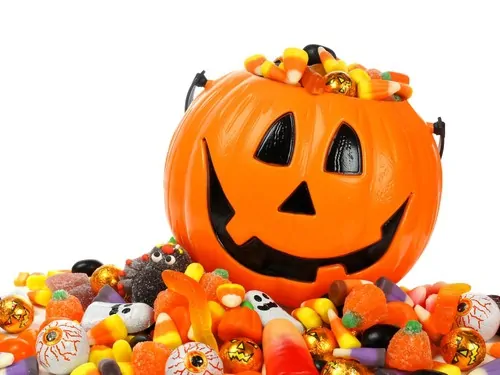
It’s that time again when our grocery aisles are taken over by ghoulish and ghostly goodies. From mini candy bars to oh-so-good sugary treats, the zombie and skeleton wrapping can only mean one thing — Halloween season is here. This also means another holiday that floods kids with candy is upon us. But just because it’s a well-known fact that your pediatric dentist in Spring really doesn’t like candy, we’re not here to ruin the fun. Instead, we want to help you by talking about the best, and the worst, candy for your kid’s pearly whites.
Just because your pediatric dentist has a fear of the sugar bug doesn’t mean we don’t still love to satisfy our sweet tooth, just like you. We just try to limit the candy that’s not so good for teeth and focus more on the ones that aren’t so bad including:
Dark chocolate has less sugar than other chocolates, making it a better choice for oral health. But that’s not all. Dark chocolates can also provide your child with powerful antioxidants too.
This doesn’t need much of an explanation. No sugar means less of a chance of developing cavities, which makes your Spring pediatric dentist pretty happy.
Candy bars that contain nuts act almost like a quick cleaning as you eat them. The crunchiness of the nuts can help scrub leftover pieces of candy from teeth, reducing the amount of sugar left behind.
The worst candies for smiles all have similar qualities. They’re loaded with sugar, they take time to eat, and they can cause enamel erosion or other dental damage. Try your best to avoid these treats, or enjoy them in moderation:
Pucker-inducing sour sweets pack a double-whammy as they contain two ingredients that don’t go well for teeth. The acid in these treats erodes tooth enamel, making it easier for bacteria to get in the hard-to-reach places and feed on the sugars.
Sticky candies such as caramels, gummy animals, and taffy can easily get stuck in the grooves of teeth, leaving them around for bacteria to feed on. The result? An increased risk of decay. Also, kids with braces should avoid sticky foods as they can cause damage to the brackets and wires and require repairs.
Candy such as lollipops or individually wrapped hard candies can not only increase the risk of decay, they can also damage teeth. These candies also take time to eat, which means teeth are exposed to the sugars over and over again.
We know it’s unrealistic to ask your child to never eat any of the candy in “The Worst” category, especially during Halloween. And that’s ok. But if he does indulge a bit, follow these tips to reduce the risk of decay or other dental problems:
Another way you can keep your kid’s pearly whites healthy and cavity-free is to maintain regular appointments with your Spring pediatric dentist.
From all of us to you and yours, Happy Halloween!
It’s that time again when our grocery aisles are taken over by ghoulish and ghostly goodies. From mini candy bars to oh-so-good sugary treats, the zombie and skeleton wrapping can only mean one thing — Halloween season is here. This also means another holiday that floods kids with candy is… Read More…